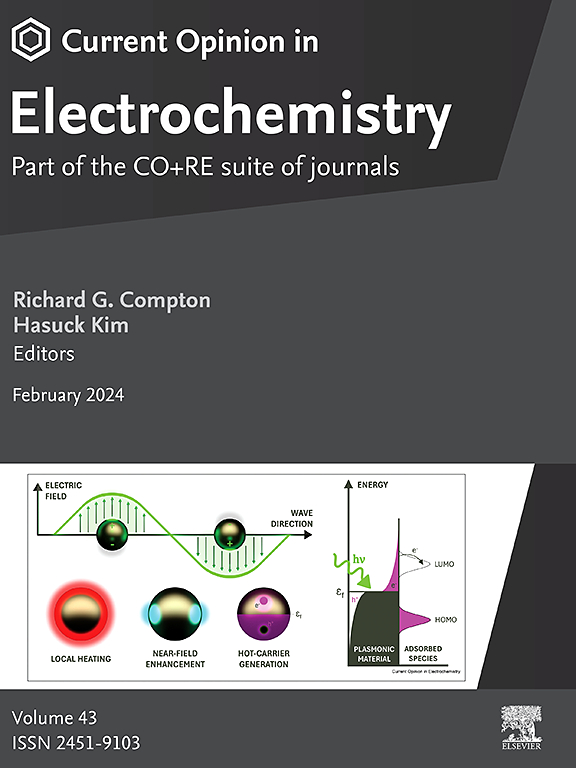Bridging the scales within transport-coupled kinetic models for heterogeneous electrocatalysis
IF 6.9
2区 化学
Q1 CHEMISTRY, PHYSICAL
引用次数: 0
Abstract
Optimizing reaction rates in heterogeneous electrocatalysis requires a solid, fundamental understanding of the interplay between mass transport and the intrinsic reaction kinetics at the electrode surface. As these processes occur on disparate scales, however, bridging the two into a (single) comprehensive reaction model is a challenging task and active area of research. In this perspective, we give a current overview of transport-coupled kinetic models while making a distinction between those that describe the surface reaction via an effective phenomenological or first-principle-based kinetic model. This choice tends to be accompanied by a correspondingly more or less elaborate inclusion of mass transport. The two modeling approaches thus generally differ in the scientific questions that they aim to answer; whether focusing on elaborate transport effects and resulting design rules at the device level or more detailed mechanistic insight on a microscopic scale. We first discuss these approaches separately, including their pros and cons through notable studies in the existing literature and conclude with an outlook view on combining the value of both in future research.
在多相电催化的输运耦合动力学模型中架起桥梁
优化多相电催化的反应速率需要对电极表面的质量传递和本征反应动力学之间的相互作用有扎实的、基本的理解。然而,由于这些过程发生在不同的尺度上,将两者连接成一个(单一的)综合反应模型是一项具有挑战性的任务和活跃的研究领域。从这个角度来看,我们给出了当前传输耦合动力学模型的概述,同时对那些通过有效的现象学或基于第一性原理的动力学模型来描述表面反应的模型进行了区分。这种选择往往伴随着相应的或多或少复杂的大众运输。因此,这两种建模方法在它们旨在回答的科学问题上通常不同;无论是专注于在设备层面上详细的传输效应和由此产生的设计规则,还是在微观尺度上更详细的机制洞察。我们首先分别讨论了这些方法,通过现有文献中值得注意的研究,包括它们的优点和缺点,最后展望了在未来的研究中结合两者的价值。
本文章由计算机程序翻译,如有差异,请以英文原文为准。
求助全文
约1分钟内获得全文
求助全文
来源期刊

Current Opinion in Electrochemistry
Chemistry-Analytical Chemistry
CiteScore
14.00
自引率
5.90%
发文量
272
审稿时长
73 days
期刊介绍:
The development of the Current Opinion journals stemmed from the acknowledgment of the growing challenge for specialists to stay abreast of the expanding volume of information within their field. In Current Opinion in Electrochemistry, they help the reader by providing in a systematic manner:
1.The views of experts on current advances in electrochemistry in a clear and readable form.
2.Evaluations of the most interesting papers, annotated by experts, from the great wealth of original publications.
In the realm of electrochemistry, the subject is divided into 12 themed sections, with each section undergoing an annual review cycle:
• Bioelectrochemistry • Electrocatalysis • Electrochemical Materials and Engineering • Energy Storage: Batteries and Supercapacitors • Energy Transformation • Environmental Electrochemistry • Fundamental & Theoretical Electrochemistry • Innovative Methods in Electrochemistry • Organic & Molecular Electrochemistry • Physical & Nano-Electrochemistry • Sensors & Bio-sensors •
 求助内容:
求助内容: 应助结果提醒方式:
应助结果提醒方式:


